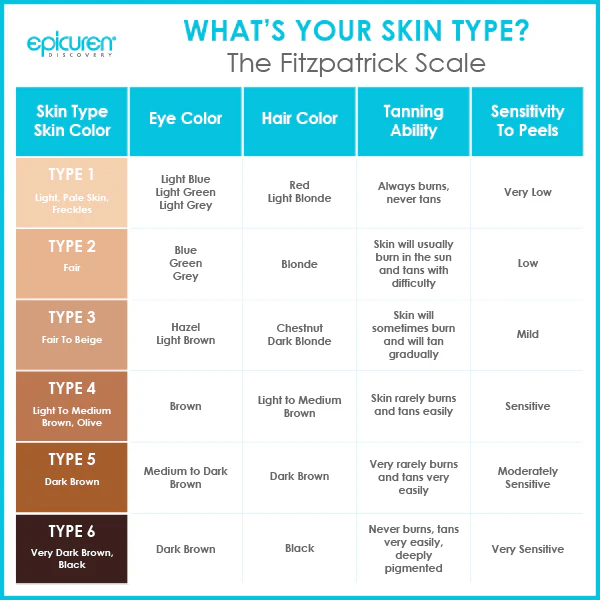Skin Typing, Typing Scales
- MISSION Day Spa
- Mar 2
- 3 min read
what is my skin type????
Did you know there are two skin "TYPE" scales most skin professionals use. But first, What the heck is it? Skin typing is very important to determine which direction you’re going with treatment protocol and skin care methodology- one common form is the Fitzpatrick Scale. Where are you on the scale? I am a Fitzpatrick Scale #III/IV. As you can see from the picture below, my Fitzpatrick type is different from that of my colleague, Jens.
Images depicted to demonstrate Fitzpatrick scale 1-6 as an educational tool only. All rights reserved. #fitzpatrickscale
The key points of using the Fitzpatrick scale are to classify skin types based on their natural melanin levels and how they react to sun exposure, allowing healthcare professionals to assess the risk of sunburn and skin cancer, guide appropriate sun protection recommendations, and determine the best treatment options for cosmetic procedures based on an individual's skin tone and tanning ability; essentially, it helps determine how easily someone burns and tans in the sun, which is crucial for personalized skincare advice.
Key aspects of the Fitzpatrick scale:
Skin color classification:
It categorizes skin into six types, ranging from very pale (Type I) to very dark (Type VI) based on their natural skin color and melanin production.
Sunburn tendency:
The scale primarily focuses on how likely a person is to burn in the sun, with lighter skin types burning more easily than darker skin types.
Tanning ability:
It also indicates how easily someone tans, with darker skin types generally tanning more readily.
Clinical application:
Dermatologists use the Fitzpatrick scale to advise on appropriate sun protection products, assess the risk of skin cancer, and plan cosmetic treatments like laser therapy, considering the individual's skin type.
Important considerations regarding the Fitzpatrick scale:
Limitations:
While widely used, the Fitzpatrick scale has limitations, particularly when considering the diverse spectrum of skin tones globally, as it might not accurately represent certain ethnicities.
Subjectivity:
Determining one's Fitzpatrick type can be subjective, and relying on self-assessment may not always be accurate.
Skin conditions:
Certain skin conditions or medications can affect how the skin reacts to sun exposure, which might not be fully captured by the Fitzpatrick scale.
There is also a skin typing method called the Glogau Scale. This method The Glogau scale is a system used by skin professionals and dermatologists to objectively measure the severity of wrinkles and photoaging (premature skin aging caused by sun exposure) on a person's face, assigning a grade from 1 to 4, with 4 representing the most severe level of visible aging; it helps practitioners determine the most appropriate treatment options for a patient based on their level of skin damage.
Key points about the Glogau scale:
Developed by: Dr. Richard Glogau
What it measures: Wrinkle development and pigmentation to assess the degree of photoaging
Scale levels:
Grade 1: Mild photoaging
Grade 2: Moderate photoaging
Grade 3: Marked photoaging
Grade 4: Severe photoaging
I'd classify my Grade as a 2-1/2. I've had laser at our local Med Spa!
Why would it be useful to know how to use these scales and apply to selecting the correct skin care (and knowing their ingredients)? Well, because being familiar with where your skin is on the scales familiarizes you with where you are on the scale will better help you choose the best skin care and protocols for your skin type, coloring and help protoect against future photodamage.
Want to learn more? Download this free app I developed for Spa Professionals and everyone to help on their skincare journey.
Spa Resource Guide App. Here you will find guides to skin care & ingredient lists, classes, Fitzpatrick and Glogau Scale descriptions and more.
Available on IOS & Android. 🔗
Please share🤩✨🙏










Commentaires